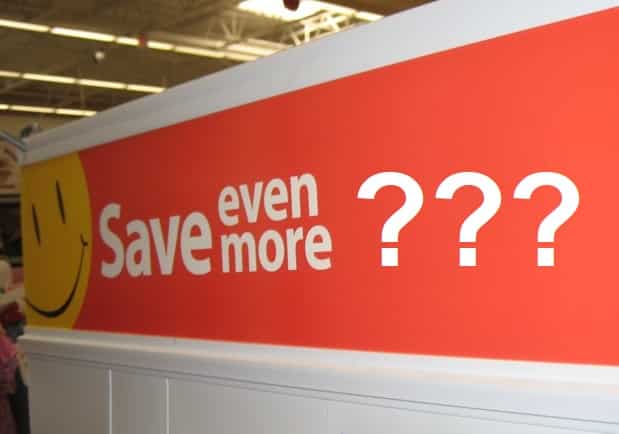
With prices on the rise, many grocery shoppers who didn’t pay close attention to coupons and deals before, are certainly paying attention now. But they’re not necessarily liking what they’re seeing.
While a number of surveys have shown that shoppers are looking for deals more often, a couple of the newest grocery surveys show that shoppers aren’t all that happy with the deals that are out there.
84.51°, the retail data analytics company owned by Kroger, reports in the latest edition of its Consumer Digest that inflation has 63% of shoppers looking for sales, deals and coupons more often. But 53% of shoppers said they’ve noticed that fewer grocery items are on sale lately, and 38% said it’s much harder to find coupons or deals for the items they typically buy.
Similarly, in IRI and 210 Analytics’ newest monthly survey of grocery shoppers, 45% of respondents said they’re looking for deals more often, but 55% said fewer of the items they want are on sale lately, and 42% said sale items don’t seem to be discounted as much.
“Consumers are extremely aware and many are applying lessons learned during the Great Recession to tighten spending,” Jonna Parker, Team Lead of the Fresh Foods practice at IRI, said in a statement. But “this lack of promotions is compounding the inflationary pressure.”
As a result, lessons learned during the Great Recession a dozen years ago don’t always apply today. According to figures from Inmar Intelligence, 287 billion coupons were distributed in 2008, the first year of the recession. But as consumers really began to feel the effects later that year and started reining in their spending, brands responded with more deals and a lot more coupons. By 2010, an all-time high of 336 billion coupons were available.
That’s usually how it works – in tough economic times, brands offer more coupons and deals, and shoppers take advantage of more coupons and deals.
But coupon distribution plummeted to just 177 billion last year, and that figure shows no signs of a sharp increase like we saw during the last economic downturn. Manufacturers are also feeling the pinch from inflation, and dealing with supply chain issues that are slowing production and distribution of their products. So a lot of brands are holding back from offering too many coupons and deals until things settle down.
And that has shoppers feeling, well, a little unsettled.
84.51° found that 73% of shoppers are extremely concerned about inflation, with nearly half “feeling uncomfortable about their finances.” And they’re not too optimistic, either – 68% are expecting that things will be even worse six months from now.
In IRI’s survey, more than a third described their financial health as “strained.” with 30% saying they struggle to afford everyday groceries.
So what are shoppers doing about it? Aside from searching for coupons and deals – and being disappointed in what they find – 57% told 84.51° that they’re cutting back on nonessentials like snacks or candy. 50% have switched to a lower-cost brand more often. And 42% are purchasing fewer items on each grocery trip. In a telling data point from 84.51°’s research, the number of grocery baskets containing dry ramen has risen 5%, while the number of grocery baskets containing fresh meat has declined as much as 20%.
IRI found that shoppers are embracing other money-saving strategies as well, such as buying more store brands, or stocking up on needed items out of fear the price may rise – which could make precarious in-stock conditions even worse. And despite high gas prices that are discouraging many drivers from making unnecessary trips, 16% of shoppers said they are visiting more stores than they usually do, to take advantage of different sales at different stores. “Switching stores is typically one of the very last measures consumers take,” Parker said. “But this time around, it is already in the mix. This is a telltale sign of consumers’ level of concern and true pressure on income in the light of the high gasoline prices.”
Another recent report by Numerator found that “inflation will impact all shoppers no matter what,” but “struggling households are the biggest concern, as they will drop out of categories entirely” and quit buying certain items altogether. While nearly two-thirds of financially-struggling shoppers told Numerator that they’re looking for more coupons lately, nearly half of higher-income shoppers are doing so as well. So “promotions are crucial in retaining category health” and generating purchases from both low- and high-income shoppers, Numerator concluded.
To marketers that are reluctant to invest in too many coupons and deals right now, IRI suggests that “creative approaches such as shorter sales and cross-category promotions could be a much-needed answer.”
One final survey, from the National Retail Federation, found that shoppers are understanding – to a point. 71% agreed that inflation is affecting everyone, so they recognize that “businesses may have to raise prices in order to continue operating and employing their workers.”
But a few more coupons and deals wouldn’t hurt. Otherwise, retailers and brands that don’t offer enough, may find they’re losing customers to those that do.
Image source: Consumerist















